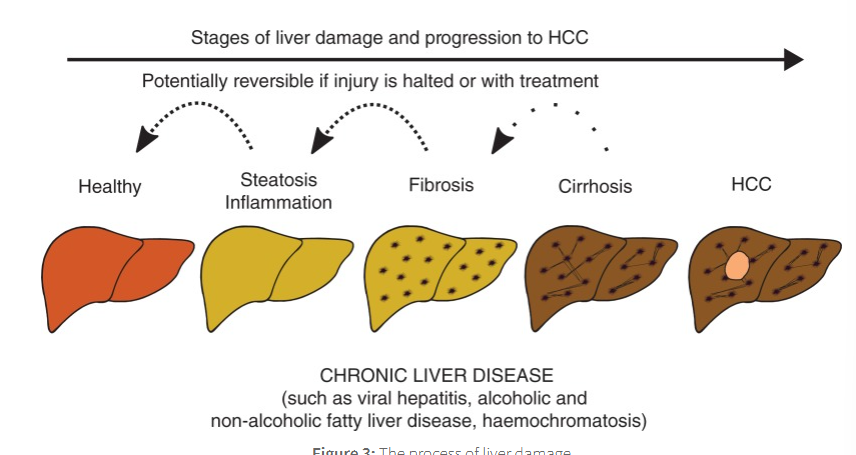2.1 pathophysiology primary liver cancer
1/18
There's no tags or description
Looks like no tags are added yet.
Name | Mastery | Learn | Test | Matching | Spaced |
|---|
No study sessions yet.
19 Terms
primary liver cancer develops from within the liver itself
there are multiple cell types in the liver and hence different risk factors
hepatocellular carcinoma HCC
most common type of cancer
fibrolamella carcinoma
a rare type of HCC that isnt licked with usual risk factors, cirrosis/ hepatitis.
usually diagnosed in patients between 20-40
bile duct cancer, cholangiocarcinoma
the bile duct are the tubes that connects the gall bladder, liver and small intestines, this is a rare type of cancer
angiosarcoma
this is a type of soft tissue sarcoma, cancer that developes in the bone/ soft tissues, that occurs in the blood vessel s in the liver. it is very rare and most commonly disgnosed in elderly patients
hepatoblastoma
this type usually affects young children and is very rare
hepatocellular carcinoma respresents between 75-85% of primary liver cancers
liver cells are called hepatocytes
when the liver is repeatedly injured it tries to repair itself
which leads to scar tissue forming in the process called fibrosis
over time fobrisis can progrss to cirrosis
where the liver becomes hardened and does not function properly

in cirrhosis the constant cell damage and regeneration increases the risk of abnormal changes in cell DNA
leading to mutations
these mutations can cause the cell to grow uncontrollably
forming a tumour which is the basis of liver cancer
the liver is essential for filtering blood, making proteins and hellping with digestion
tumours in the liver can affect these functions
this is why symptoms of liver cancer include
weight loss
jaundice
ascites
ascites
fluid accumulation in the abdomen
jaundice
yellowing of the skin mucosa membrane and whites of the eyes due to high levels of bilirubin in the blood.
biirubin
bilirubin in a product from the breakdown of red blood cells that is processed by th eliver before excretion.
when the liver is not functioning properly this process cannot occur
leading to signs of jaundice
In the UK, the physiology of liver cancer is often tied to underlying liver diseases,
which weaken the liver’s normal ability to regenerate, making it more prone to cancer development
Early detection is critical,
as the liver itself does not show obvious symptoms until significant damage has occurred.